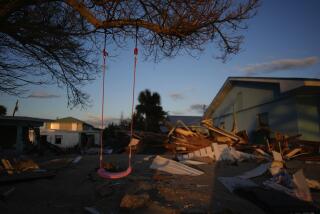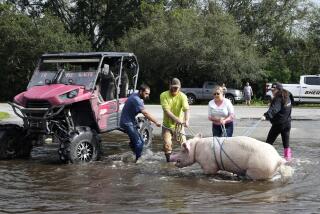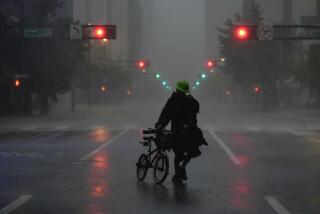Will Hurricane Dorian follow in Andrew’s devastating footsteps?
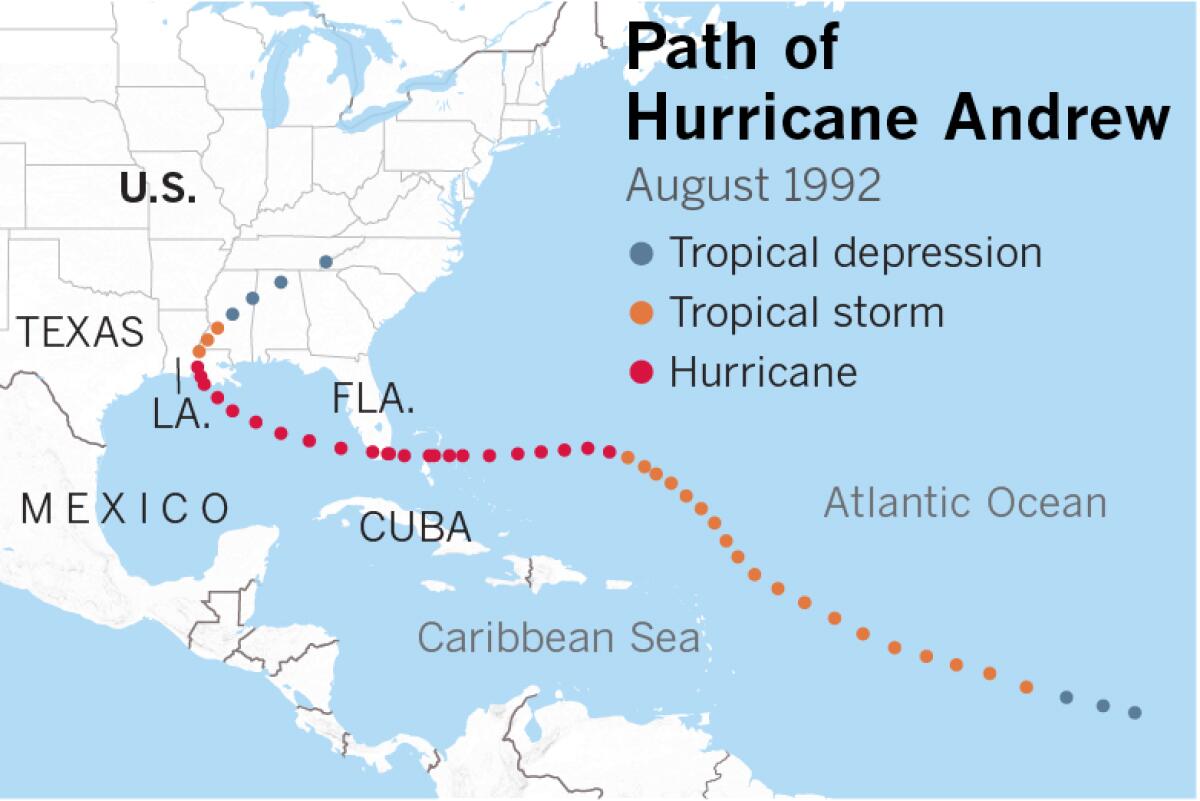
- Share via
Hurricane Dorian is expected to make landfall as soon as late Monday with Category 4 intensity, the strongest storm to make a direct hit on Florida’s east coast since Hurricane Andrew, 27 years ago this month.
The National Weather Service warned in a tweet Thursday of a “triple-threat” including a life-threatening storm surge, devastating hurricane-force winds and heavy rain, urging Florida residents to “prepare NOW” for Dorian.
Forecasts Friday afternoon from the National Hurricane Center predict that a strengthening ridge over the western Atlantic will steer Dorian from its current path to a more westward track for the next few days. The hurricane is expected to draw strength from the bathtub-warm ocean waters it will pass over.
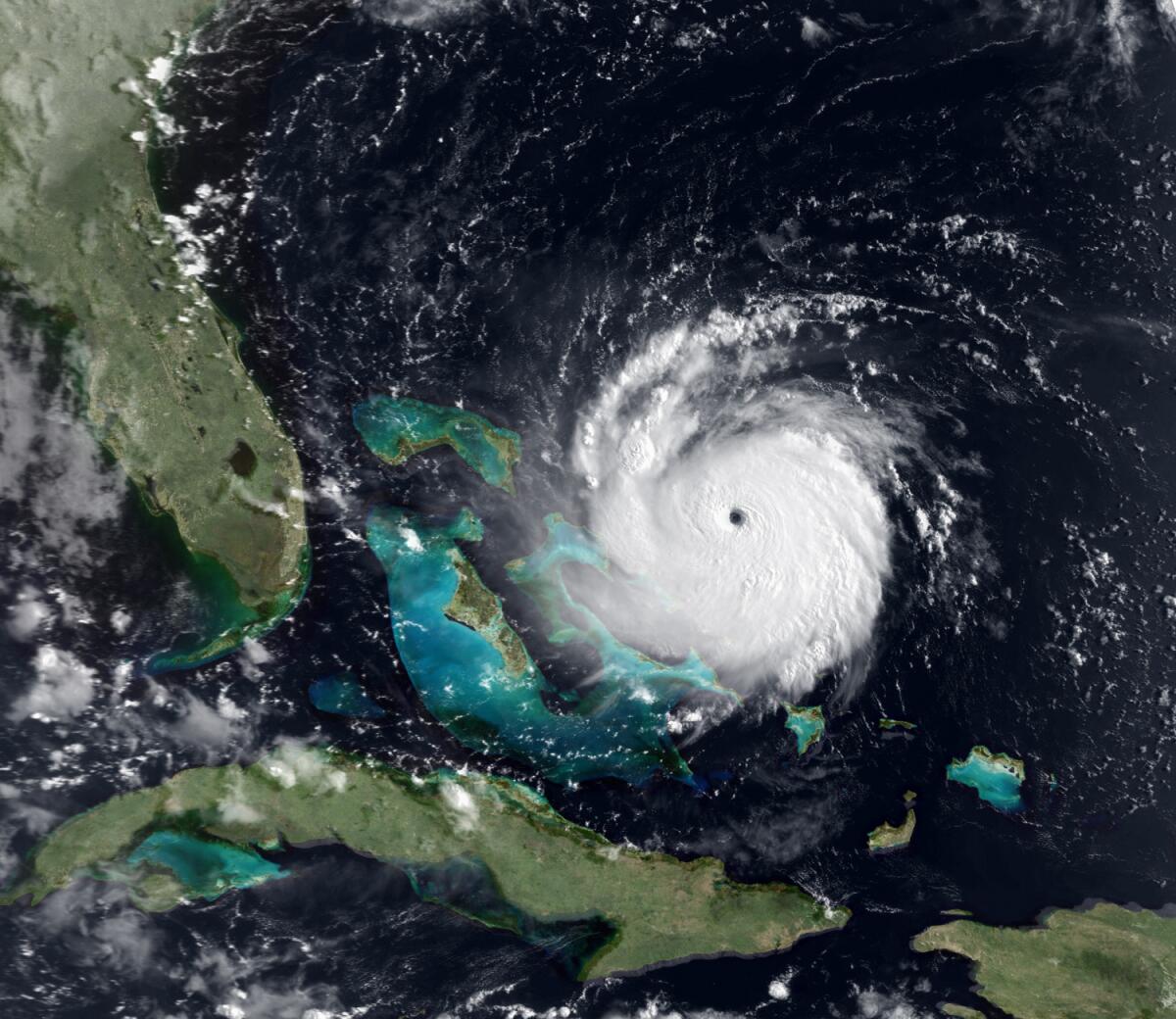
Hurricane Andrew, with sustained winds of 165 mph, made landfall in Homestead, Fla., on Aug. 24, 1992. That’s south of where forecasters predict that Dorian will hit the Florida coast. Andrew had weakened as it crossed the ocean from where it was born near the west coast of Africa. The 1992 hurricane season in the Atlantic Basin had been quiet, and the National Hurricane Center had almost abandoned monitoring the weakened system. But then the storm rallied, becoming the season’s first named storm on Aug. 22, and crossed Florida’s coast as a Category 5 just two days later.

Andrew destroyed as many as 25,000 homes, including 99% of mobile homes in Homestead, leaving 160,000 homeless. It revealed faulty construction in most of the damaged homes. As a result, South Florida now has among the strictest building codes in the nation, with requirements for storm shutters and impact-resistant glass.
Andrew was among the most costly natural disasters in U.S. history, with a price tag of nearly $48 billion. It led to improvements in forecasting and emergency management policies, as well as laws against price gouging for essentials such as food, water, ice, batteries and generators.
The lessons of Andrew came at the price of 65 fatalities. The hurricane affected the Bahamas, Florida, Louisiana and other parts of the U.S. Southeast.
Hurricane Dorian is currently forecast to follow a path similar to Andrew’s. The population of Florida has grown by about 7 million since 1992 — with 98% living in coastal counties. So there are a lot more Floridians hoping Dorian will not wreak havoc like Hurricane Andrew.
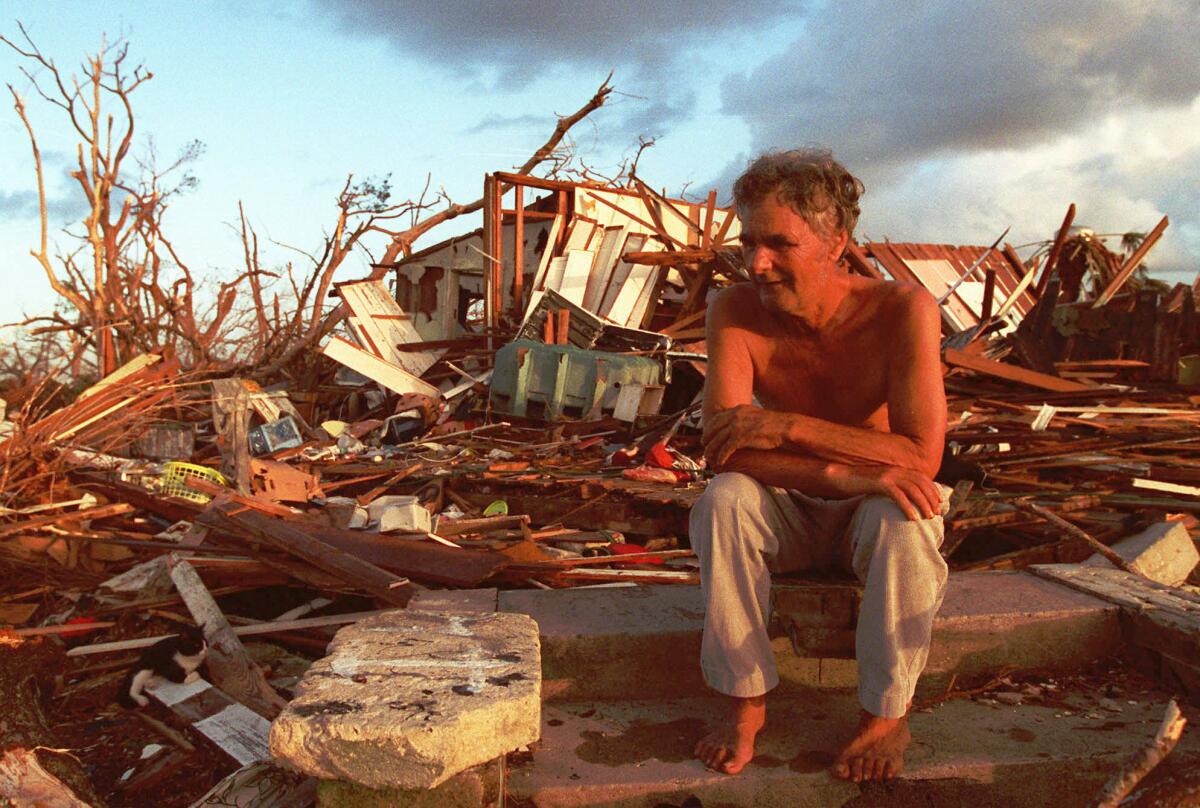
More to Read
Sign up for Essential California
The most important California stories and recommendations in your inbox every morning.
You may occasionally receive promotional content from the Los Angeles Times.
